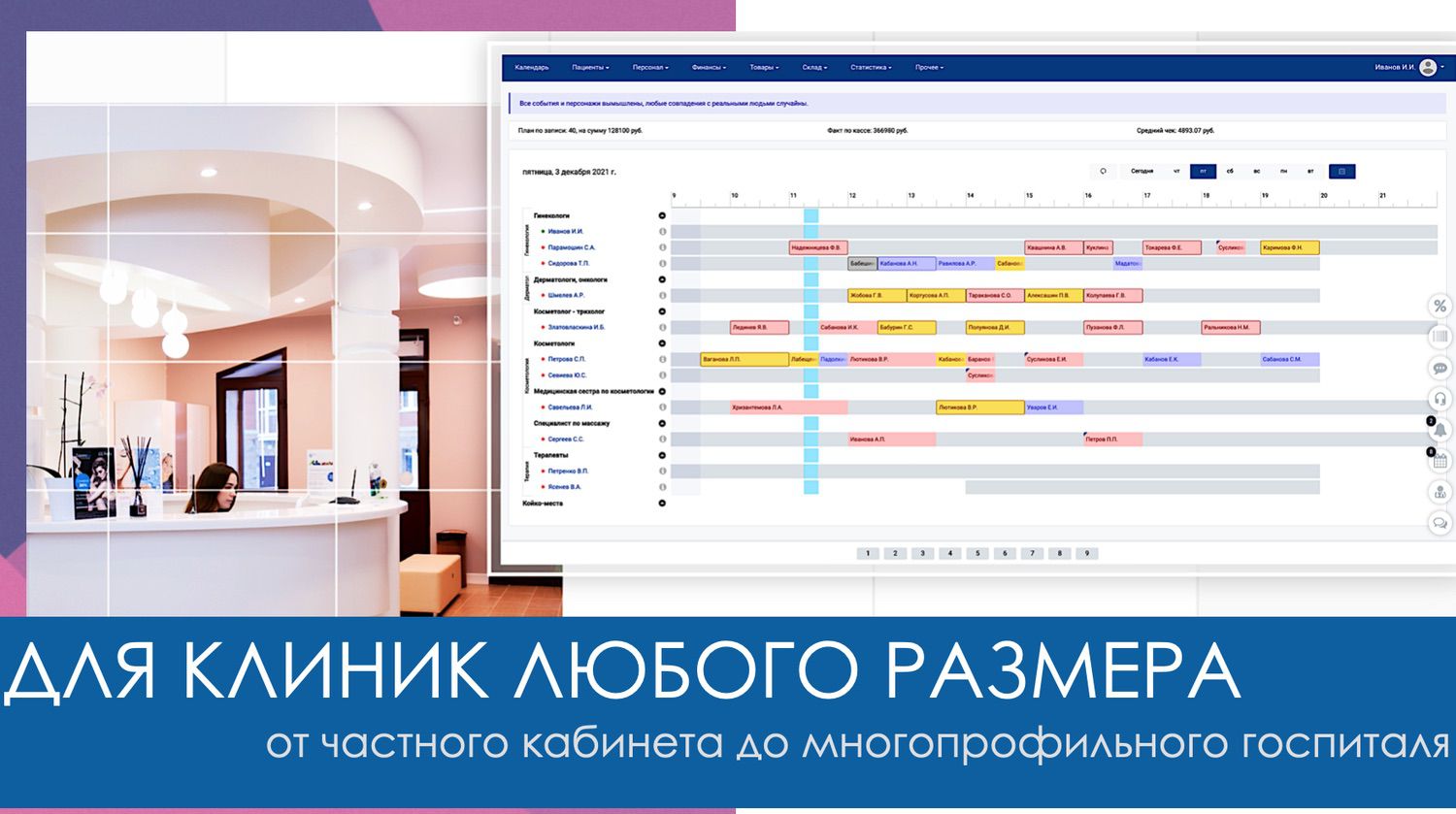
Стаффордширский бультерьер является самой популярной породой в Лондоне.
The introduction of information systems into the practice of medical care is a trend of our time. We offer a number of pragmatic recommendations on the use of the Matrix GO software and analytical complex in the management of medical institutions in general and the quality of medical care in particular.
Observing the active introduction of information systems into all spheres of human life and activities, one can state that this is the trend of our time, responding to the call for development.

Everything develops. Staff motivation, competence, teams, processes and technologies, decision-making structures, behavior, patient interaction, interaction with suppliers, organizational "climate", organizational culture, authority structures, information flow structures, areas of responsibility, management styles and methods, interpersonal and intergroup relationships, and much more. Naturally this causes an increase in chaos and requires systematization as a way of building a relationship with chaos.
The essence of any business, let alone a business providing medical services, is to be and develop at the intersection of order and chaos.
However, specifically in medicine, there are categories that are very difficult to systematize, take, for example, the quality of medical care.

The need to discuss the quality of medical care dates back to the beginning of the last century, and the first consciously constructed system, when the state declared that it was taking responsibility for the quality of medical and sanitary well-being of the population, began in 1918. But it is only now that an understanding has emerged that the provision of medical care to the population and to the individual patient is not a set of disparate factors, but a functional social system - a set of medical, social and economic measures aimed at protecting and improving health. And due to the emergence of employees with different levels of professional training and increased state supervision, the use of information systems in improving the quality of medical care is becoming a priority.
When discussing the concept of "quality of medical care," there are traditionally different opinions, which reflect primarily the position of the party giving the definition.
The patient, physician, representatives of the insurance company or health care authorities, also being consumers of quality, from their point of view will be guided by different approaches in defining the quality of medical care. In this regard, the notion of expectation value, i.e., what the consumer pays for, why he or she needs a medical service, becomes important.
It is unlikely that the patient needs painful expensive procedures, rather he is looking for relief of his own condition, extension of life, improvement of his appearance, sympathy and, ideally, healing.
In most cases, the patient doesn't care what generation of equipment is in the clinic or whether it meets the technical specifications of the service. Improving one's well-being is the patient's value. It is by this value that he will evaluate the quality of care. Assessment of the actual medical effectiveness of treatment usually cannot be performed adequately by patients due to their lack of competence in these matters.
The patient wants to know where and to whom he can go in case of illness, how quickly he can get medical care, how carefully the doctor will listen to him and whether he has given him enough time, etc. Thus, no less important components in assessing the quality of medical care for the patient are awareness of the services and the level of service.

Other consumers of quality also have their own expectations. For example, for the government, what matters is the return on investment in the form of improvements in the key health indicators of the population. For health care authorities, financial and material resource indicators have traditionally been the most important: for example, the floor of a clinic building and the number of computer tomographs have a direct proportional impact on quality. For insurance company employees, when assessing the quality of care, the leading indicators are the cost of providing services within a specific clinical protocol and patient satisfaction, while patient satisfaction is usually of secondary importance. For Roszdravnadzor and Rospotrebnadzor - compliance with the legislation in terms of licensing and sanitary and epidemiological regime.
For the doctor, the quality of care provided is usually determined by a sense of accomplishment.
This requires tools that allow the doctor to free up more time for the patient rather than working with the medical record. With a number of functional modules, such as auto-fill medical records, Matrix GO is very easy to use for doctors of different ages, which is important because of the different level of doctor training in the use of computer technology.

Let's continue. And for the head of a medical institution, whether a private office or a multidisciplinary clinic, what is the criterion? Full compliance with the expectations of all consumers. The manager needs up-to-date information online, as a result of processing all medical, economic and social data.
Due to the fact that there is quite a lot of data in the full cycle of providing medical services - it is the work of the call center, and medical documentation with the execution of contracts and certificates of incapacity for work, it is the writing off of consumables with medicines, and the formation of a check for the online cash register, much more, which distracts the manager from the key quality components: patient awareness, service and healing, using an information system is guaranteed to increase control and manageability of medical and business processes

Considering a medical institution as a system, it is necessary to take into account all the constituent subsystems (registration, structural units, call center, marketing service, warehouse, accounting, management, etc.) and their interaction with each other.

A modern approach to management should be based on the consideration of both internal processes occurring in the organization and the identification of inseparable links with the outside world (calls, requests from patients, requests from outside organizations, including regulatory bodies, etc.), in which case all managerial decisions will be based on current and reliable information about the processes taking place.
The manager must have an understanding of the situation in which his team is, know the position of the company in the industry and see its strengths and weaknesses and determine the sequence of actions for further development. However, the rapidly changing conditions of medical care and the state of uncertainty in choosing the path of development require "unusual" and unfamiliar to competitors solutions in developing development strategies, and this, in turn, can only be carried out on reliable information about the state of the processes.
The Matrix GO software and analytical complex, based on a deep understanding of social, economic and medical processes and tested for 10 years in a number of clinics in Russia, meets all the requirements for effective management of a medical institution in today's economic environment.
The main result of implementing an information assistant in the work of a medical institution is the creation of a unified information space, which means establishing effective horizontal links between all employees of the medical institution. Working from any device and allowing offline self-analysis, Matrix GO enables the manager to see problem areas, consider them from different angles and find the direction in which the medical institution should develop in order to get rid of shortcomings and strengthen the merits of medical care quality. And, the compliance of the competence of the managerial level of a medical institution with modern requirements is assessed by repeated reliable results.
The experience of health care managers suggests that systematization is possible. However, dealing with people and managing their goals is an element. The activities carried out by health care managers give us a chance to understand the world more deeply through this duality - order and chaos. This is where the troubles, strengths and opportunities of tomorrow come from.As a demonstration, I will offer some pragmatic solutions to improve the quality of medical care in terms of its components: awareness, service, healing.

Being integrated into various systems, such as IP-telephony, various Internet services and patient record aggregators, such as SberZdorovye, including state systems - Honest Sign, EGISZ...

Implemented in two versions - a boxed version for 148 thousand rubles, installed on the clinic's server, or a cloud version for 14,800 a month, using servers located in Russia.

All this, together, was the basis for the easy acquisition of many clinics, popularity among managers, as a result of which in 2021 Matrix GO was a diploma winner of the contest best products of Russia.

And, at the same time was accepted into the software registry of the Ministry of Digital Development of the Russian Federation.

Thus, the program-analytical complex recommended for quality management, which takes into account the specifics of medical business, will allow the head of a medical institution to see the natural and direct managerial efforts to develop the quality of medical care, strengthen competencies of employees, increase economic efficiency of medical business and improve their own efficiency.
Of course, Matrix Go is not the only product on the market. But, the word competition from the ancient Greek means "to run together," someone running faster and someone knowing which direction to go. As a product, Matrix GO has developed intensively for 10 years, accumulating technical competitiveness over those years. But, the space for its extensive development has only now opened up. In particular, knowing the size of the private medicine market, our team, now of 8 employees, plans to tap a third of that market by 2025.


Любой предмет можно увидеть, потрогать рукой, обозначить именем, наделить смыслом. Это легко! А как быть с умозрительными объектами? Например число пять, это что? Как его подержать в руке? Не в смысле пять яблок, а как число. А воображение - можно ли его потрогать? Это будет посложнее. Или вот, например, культура – это что? Как её увидеть? И, можно ли? А изучить ее закономерности сохранения или развития? Сложно!

Казалось бы, что может быть общего между коренными народами Крайнего Севера и африканцами? При всем желании очень трудно найти сходство между ненцами, хантами и представителями племен датогов и масаи, проживающих в Танзании. С таким же успехом можно пытаться сравнить раскаленный африканский песок и жидкий азот, лед и пламя, жару и холод, черное и белое. Тем не менее, побывав во время недавней экспедиции в Африке, удалось увидеть то, что роднит народы, никогда не пересекавшиеся друг с другом.
Что это? What’s happened?
It’s incredible! Es increíble! – хотелось прокричать на всех языках каждый миг этого дня, потому как поверить в случившееся сложно.